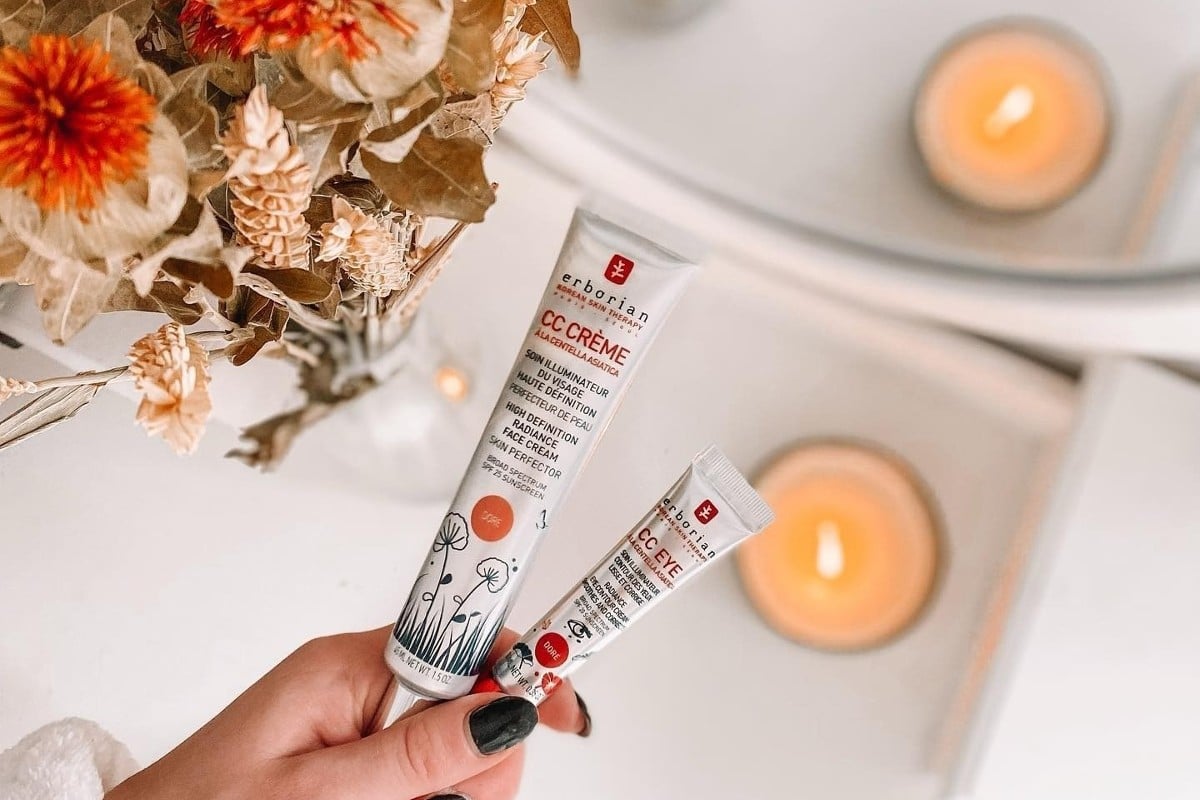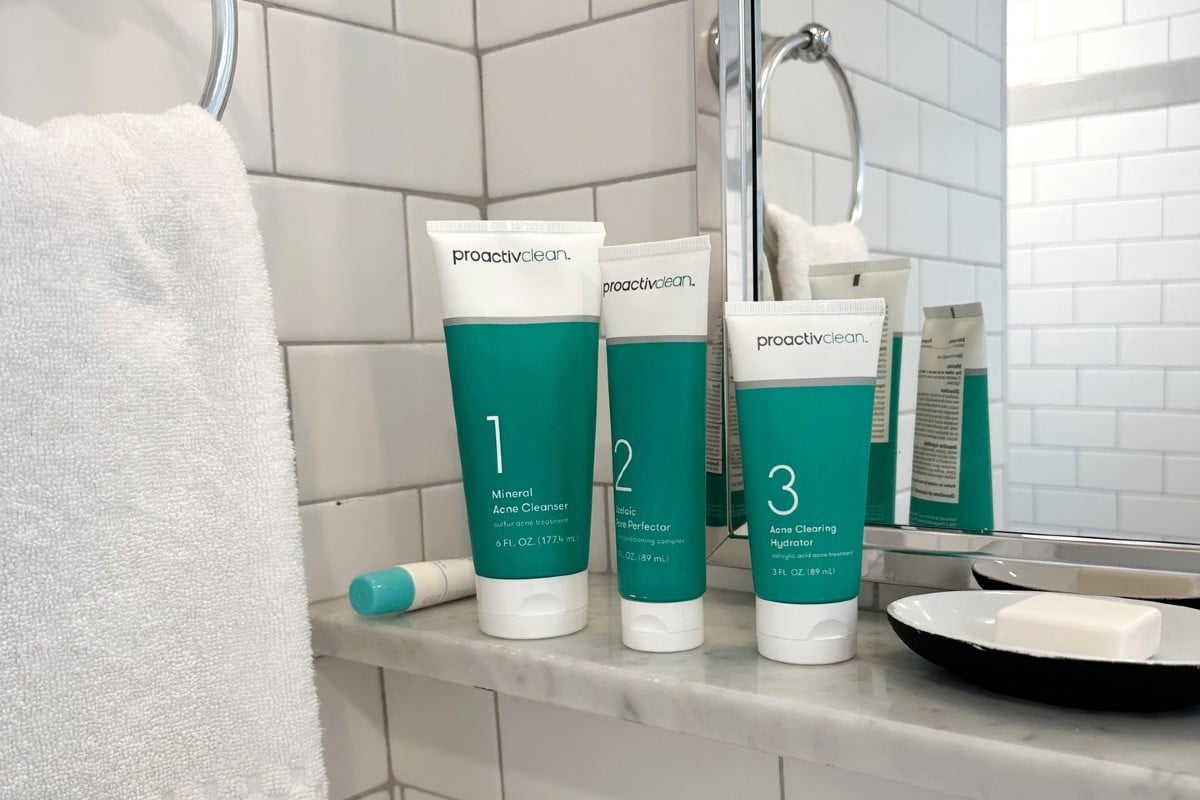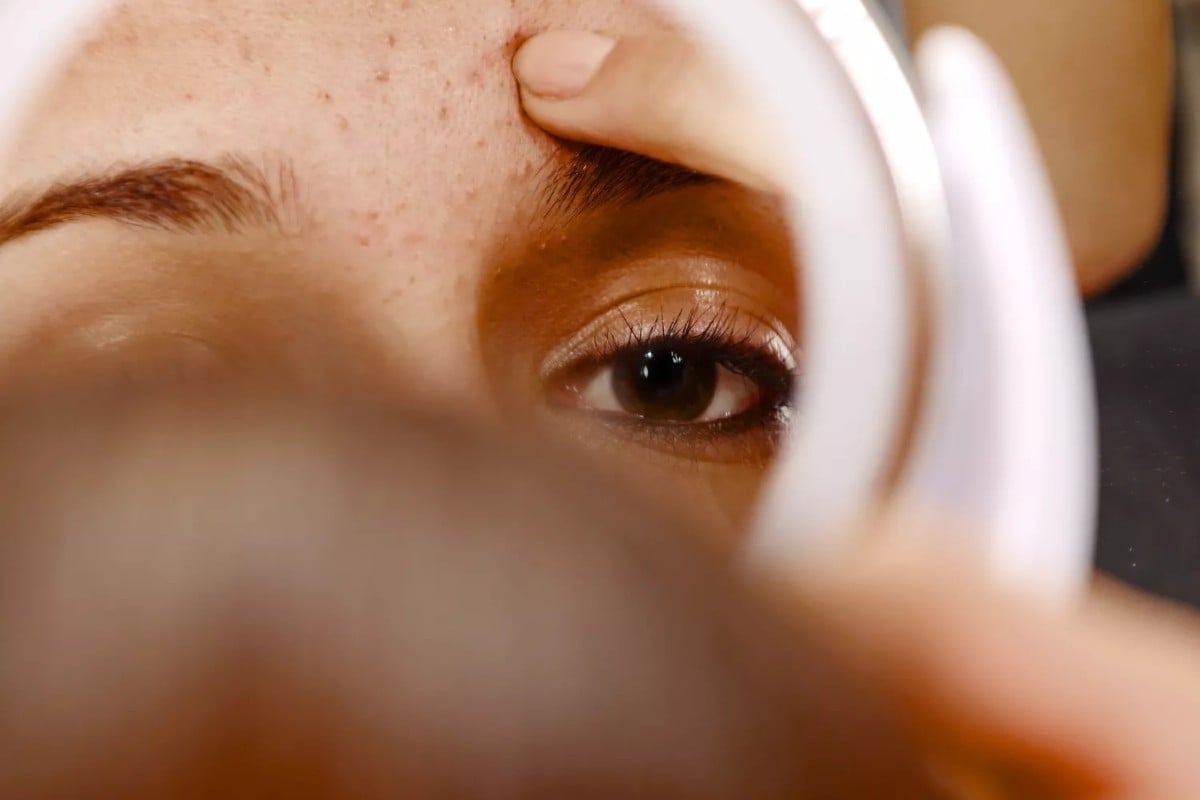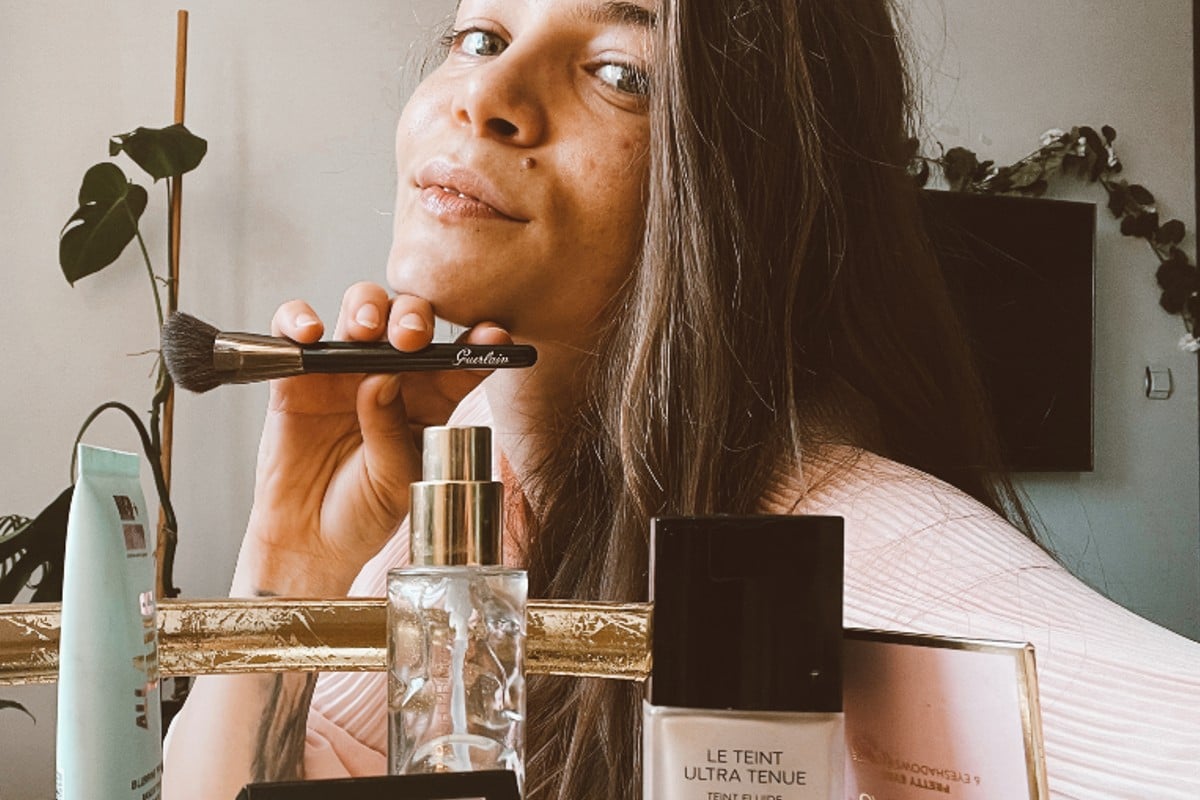When it comes to addressing acne, few options are as effective as benzoyl peroxide. Renowned for its unparalleled ability to kill acne-causing bacteria, dry out pimples, and reduce inflammation, benzoyl peroxide is a go-to recommendation for most dermatologists. But as great as it is, this acne-fighter has a track record of inducing irritation and other side effects. That’s why you should know all the how-tos before making it a part of your skincare routine. Ahead, you’ll find everything about benzoyl peroxide so you can use it confidently and achieve maximum results with minimal side effects.
- What is benzoyl peroxide?
- How does it work on acne?
- What types of acne can benzoyl peroxide treat?
- What else does it do?
- Benzoyl peroxide side effects
- How to use benzoyl peroxide
- What if benzoyl peroxide irritates your skin?
- Who should avoid benzoyl peroxide?
- What percentage of benzoyl peroxide is best?
- What if benzoyl peroxide is not working?
- Alternatives to benzoyl peroxide
- Benzoyl peroxide vs. salicylic acid
- Benzoyl peroxide vs. other acne treatments
- The bottom line
What is benzoyl peroxide?
Benzoyl peroxide is an ingredient derived from hydrogen peroxide that works as a comedolytic, keratolytic, anti-inflammatory, and antibacterial agent.[1] In skincare, benzoyl peroxide is used to treat acne, and it can be found in prescription and over-the-counter products like face washes, gels, creams, and spot treatments in concentrations ranging anywhere from 2.5 to 10%. You will see by the end of the article that more is not necessarily better, and in most cases, there is no need to go overboard with higher concentrations of benzoyl peroxide.
How does it work on acne?
Kills bacteria
Benzoyl peroxide carries and releases oxygen into the skin’s pores to destroy acne-causing bacteria. Technically speaking, benzoyl peroxide releases reactive oxygen species (ROS), which are toxic to bacteria and disrupt the bacterial cell membrane. So how effective is it? During a vivo study, applying 10% benzoyl peroxide daily for two weeks reduced the amount of bacteria in hair follicles by a whopping 98%.[2]
Unclogs pores
As a keratolytic (exfoliant) and comedolytic agent, benzoyl peroxide promotes the shedding of dead skin cells and reduces their accumulation within the hair follicles. This dual action unclogs the follicles and reduces the formation of comedones (clogged pores).
Reduces inflammation
Benzoyl peroxide has anti-inflammatory effects that help ease swelling and decrease the severity of inflamed pimples, which may be known as papules, pustules, nodules, or cysts.[3]
Decreases sebum production
Benzoyl peroxide has been shown to lower the activity of the sebum-producing sebaceous glands. However, the extent to which benzoyl peroxide affects sebum production still remains controversial among experts. This study shows that 10% benzoyl peroxide did not affect sebum production at all. Another one is even more conflicting, proving that benzoyl peroxide led to an increase of sebum on the forehead, chin, and cheek, unlike other treatments like azelaic acid and adapalene, which reduced sebum secretion.
What types of acne can benzoyl peroxide treat?
Benzoyl peroxide can treat most types of acne, but it’s most effective on mild to moderate inflammatory acne (vulgaris), which is characterized by swelling, redness, and inflamed pustules that sometimes can hurt. It can also help with blackheads and whiteheads since it unclogs the pores, but it’s best to use it with other treatments that are more suitable for this type of acne.
Benzoyl peroxide is effective for cystic pimples as well, the most severe type of acne characterized by painful and hard bumps below the skin’s surface filled with pus. Since P. acnes is a major contributor to cystic acne, benzoyl peroxide kills bacteria and speeds up pimple healing.
What else does it do?
According to this source, off-label indications for benzoyl peroxide include:
- Inflammatory forms of rosacea
- Folliculitis
- Keratosis pilaris
Benzoyl peroxide side effects
Benzoyl peroxide is a drying ingredient, so there’s a chance you can experience dry, red, or flaky skin. To help counteract these adverse effects, use benzoyl peroxide along with hydrating ingredients like hyaluronic acid, squalane, ceramides, and colloidal oatmeal.
It can also increase the number of free radicals in your skin, which are associated with aging signs. It’s a double-edged sword—while free radicals eliminate bacteria, they can also damage your healthy skin cells and deplete essential proteins and antioxidants within your body.
Research shows that benzoyl peroxide reduces epidermal vitamin E by up to 95% and vitamin C by up to 70%.[4] This can potentially lead to oxidative stress, a process that occurs when the number of free radicals overweight the body’s skin’s antioxidant defense.
However, this is unlikely to happen in normal circumstances, but only when you overuse benzoyl peroxide or use too high concentrations.
That’s why on one hand, you need to use benzoyl peroxide in moderation and according to product directions, and on the other, you should follow up with an antioxidant-rich serum (preferably with vitamin C) in the morning after using benzoyl peroxide at night.
Never use retinoids and vitamin C with benzoyl peroxide at the same time—they deactivate each other.
How to use benzoyl peroxide
You can use benzoyl peroxide as a face wash, spot treatment, or lotion. Regardless of what method you prefer, follow the direction of the product and never overuse or apply benzoyl peroxide excessively. It is also very (very) important to clean your hands first. Don’t overlook this. We’ve seen a lot of stories where people’s skin broke out because bacteria from their hands transferred to their faces.
Moreover, use your benzoyl peroxide product at night because it can make skin photosensitive. And never skip sunscreen the following day.
As a spot treatment
When using benzoyl peroxide as a spot treatment, apply the tiniest dose you can and start gradually to allow your skin to build tolerance.
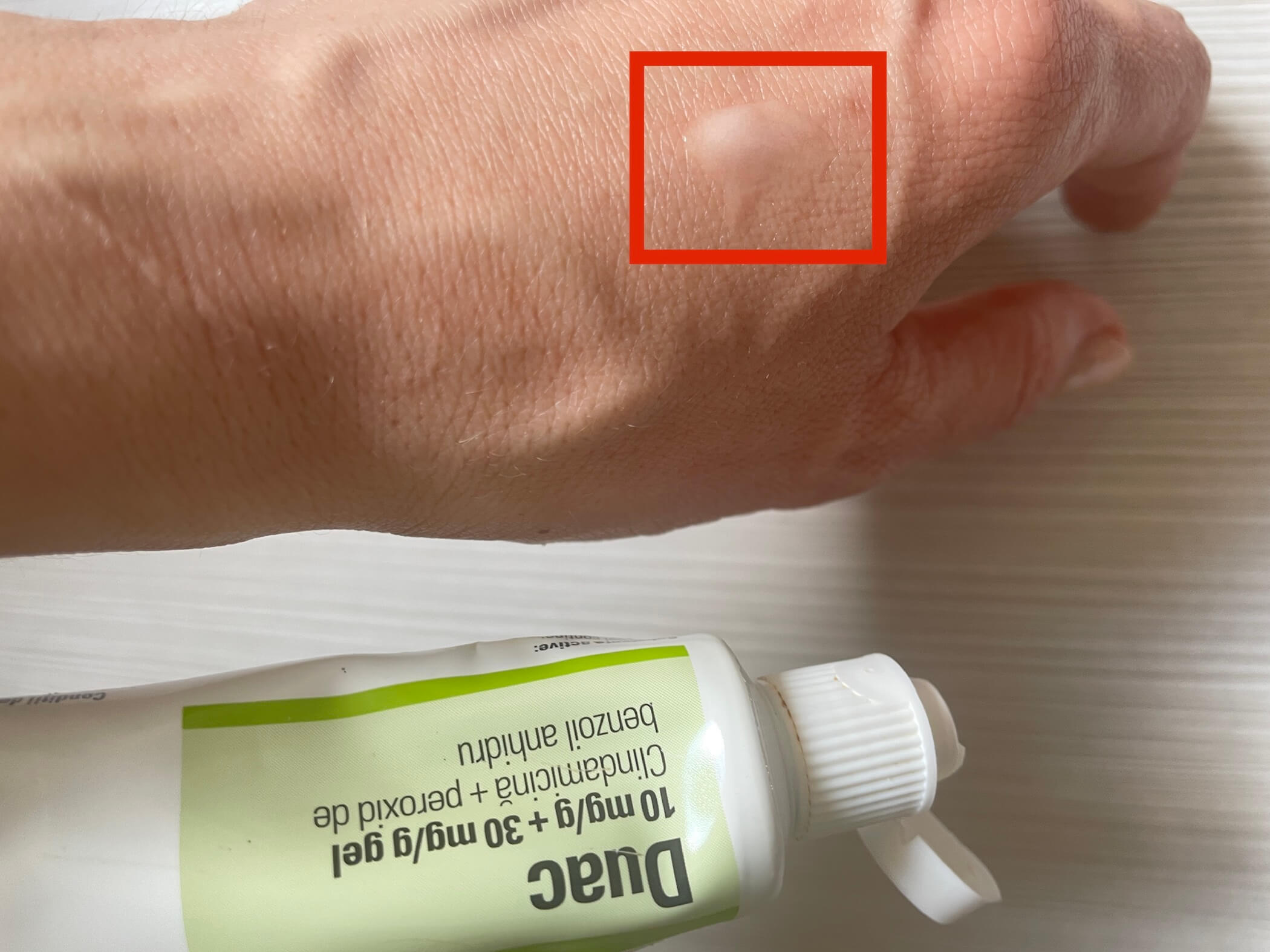
For instance, start applying benzoyl peroxide every three days for the first two weeks. Then every other day, then two days on and one day off, and finally, every day. Take a break when you get the results you want. Reduce frequency if you see irritation or excessive dryness.
While mild products with 2.5% benzoyl peroxide, like Neutrogena On-the-Spot Acne Treatment, can be applied all over the face, we recommend using it only on the areas that are currently breaking out.
Wait for the benzoyl peroxide to dry completely before applying additional products. This usually takes a few minutes, and then you can proceed with your regular skincare routine, including moisturizer.
Make sure you treat your skin gently. You need a hydrating cleanser, a soothing moisturizer, and a good sunscreen while following a benzoyl peroxide regimen. Also, cut out exfoliants to avoid overtaxing your skin.
Finally, you should only leave benzoyl peroxide overnight in concentrations of 2.5-5%. For 10% concentration, it’s best to apply it 30 minutes before your face wash time and rinse off the solution.
As a face wash
Use the cleanser, let it sit for about five minutes, then wash it off with water and continue the rest of your routine. Don’t wash your face more than twice a day unless you are excessively sweating.
As a lotion
First, cleanse your face (and hands) and pat it dry. Use a pea-sized amount of lotion and gently massage it into your skin.
From our experience, lotions with benzoyl peroxide usually leave yellow stains on the pillow. If you’re concerned about stains, choose a spot treatment or face wash instead.
What if benzoyl peroxide irritates your skin?
Take a break from it so your skin can heal. Use a barrier repair product to speed up the recovery process. In the future, try to use a smaller amount of the product and wash it off more promptly than you previously did.
Who should avoid benzoyl peroxide?
If you have sensitive skin, eczema, or seborrheic dermatitis, it’s best to avoid benzoyl peroxide because of its drying effects. Pregnant or breastfeeding women should also steer clear, as well as those who use certain medications like topical retinoids or hydroquinone.
What percentage of benzoyl peroxide is best?
Benzoyl peroxide comes in strengths from 2.5 to 10%. However, a higher concentration doesn’t necessarily mean better results. During several studies, 2.5 or 5% benzoyl peroxide provided almost the same benefits as 10% but with fewer side effects and a higher tolerance rate.[5]
What if benzoyl peroxide is not working?
If you’re thinking that benzoyl peroxide isn’t doing the trick for you, it’s not because your skin has built a resistance to it (it’s a common misconception going in the skincare world). Unlike other antibiotics like clindamycin, benzoyl peroxide works on P. acnes without causing antibiotic resistance.[6]
Most likely, you have a weak skin barrier that favors the growth of bacteria, and no matter what acne treatments you use, they won’t be able to keep up with the rate at which bacteria grows.
Alternatives to benzoyl peroxide
If you think benzoyl peroxide is not working or your skin can’t tolerate it, these ingredients are great alternatives:
- Tea tree oil
- Salicylic acid
- Retinoids
- Adapalene
- Clindamycin
- Sulfur
- Azelaic acid
- Zinc
- Alpha-hydroxy acids
Benzoyl peroxide vs. salicylic acid
Although both salicylic acid and benzoyl peroxide treat acne and have antibacterial and anti-inflammatory effects, they work quite differently: Salicylic acid works by unclogging pores, while benzoyl peroxide by killing acne-causing bacteria.
Another key difference between the two is that salicylic acid is more effective for treating whiteheads and blackheads, while benzoyl peroxide is a better option for inflammatory acne (papules and pustules).
One clinical trial conducted by the American Academy of Dermatology found that a 2.5% benzoyl peroxide product is twice as effective as 0.5% salicylic acid for noninflammatory acne, while salicylic acid was considerably less drying and more tolerated than benzoyl peroxide.[7]
But can you use them together? No, at least not at the same time. You can alternate their use, salicylic acid one day and benzoyl peroxide the other.
Benzoyl peroxide vs. other acne treatments
Tretinoin
When it comes to acne treatment, tretinoin, and benzoyl peroxide have quite a few things in common. Both are comedolytic agents and work by clearing pores, reducing bacteria, and easing inflammation. According to an old study from 1978, benzoyl peroxide is significantly better in the reduction of papules and as good as tretinoin for comedones.[8] Another study showed that benzoyl peroxide produces a more rapid effect on inflammatory lesions and less peeling than tretinoin.[9]
Clindamycin
While benzoyl peroxide directly targets acne-causing bacteria, clindamycin possesses antibacterial properties that help reduce the growth of bacteria associated with acne. As a matter of fact, clindamycin and benzoyl peroxide are often used together to treat breakouts.
From a comparative viewpoint, a study found that benzoyl peroxide gel was more effective than clindamycin. However, the latter had a milder effect on the skin in terms of peeling and drying.[10]
Adapalene
Just like tretinoin, adapalene is a retinoid that regulates cell turnover and hinders the formation of comedones. In a study, 0.3% adapalene and 2.5% benzoyl peroxide were combined in a single gel formulation and have been found effective in reducing atrophic acne scars.[11]
Regarding how these two tackle different types of acne, adapalene is better for noninflammatory conditions. On the other hand, benzoyl peroxide takes charge when it comes to inflammed pimples.[12]
READ NEXT: 10 Best Acne Treatments for Sensitive Skin
The bottom line
Women’s Concepts uses reliable sources, including dermatologists’ insights, clinical trials, and scientific journals, to find accurate information and support all the facts shared in our articles. All statements and claims have clear and legit references. Read our editorial policy to learn more about our sources of information, our process of researching and fact-checking the content, and how our team strives to keep all articles updated, completed, and trustworthy.
- National Center for Biotechnology Information (2022). PubChem Compound Summary, Benzoyl peroxide. Retrieved March 21, 2022.
- Nacht S, Gans EH, McGinley KJ, Kligman AM. Comparative activity of benzoyl peroxide and hexachlorophene. In vivo studies against propionibacterium acnes in humans. Arch Dermatol. 1983.
- John J. Russell, M.D., Abington Memorial Hospital, Abington, Pennsylvania, Topical Therapy for Acne, Am Fam Physician. 2000.
- Bowe, W.P., Logan, A.C. Clinical implications of lipid peroxidation in acne vulgaris: old wine in new bottles. Lipids Health (2010).
- Mills OH Jr, Kligman AM, Pochi P, Comite H. Comparing 2.5%, 5%, and 10% benzoyl peroxide on inflammatory acne vulgaris. Int J Dermatol. 1986 Dec;25(10):664-7. doi: 10.1111/j.1365-4362.1986.tb04534.x. PMID: 2948929.
- Kircik LH. The role of benzoyl peroxide in the new treatment paradigm for acne. J Drugs Dermatol. 2013.
- Journal of the American Academy of Dermatology, A double-blind comparison of the efficacy of a salicylic acid based acne treatment regimen versus a benzoyl peroxide based acne treatment regimen for the treatment of acne vulgaris, March 2004.
- Lyons RE. Comparative effectiveness of benzoyl peroxide and tretinoin in acne vulgaris. Int J Dermatol. 1978 Apr;17(3):246-51. doi: 10.1111/j.1365-4362.1978.tb06072.x. PMID: 148436.
- Belknap BS. Treatment of acne with 5% benzoyl peroxide gel or 0.05% retinoic acid cream. Cutis. 1979 Jun;23(6):856-9.
- Swinyer LJ, Baker MD, Swinyer TA, Mills OH Jr. A comparative study of benzoyl peroxide and clindamycin phosphate for treating acne vulgaris. Br J Dermatol. 1988 Nov;119(5):615-22. doi: 10.1111/j.1365-2133.1988.tb03472.x. PMID: 2974719.
- Dréno B, Bissonnette R, Gagné-Henley A, Barankin B, Lynde C, Kerrouche N, Tan J. Prevention and Reduction of Atrophic Acne Scars with Adapalene 0.3%/Benzoyl Peroxide 2.5% Gel in Subjects with Moderate or Severe Facial Acne: Results of a 6-Month Randomized, Vehicle-Controlled Trial Using Intra-Individual Comparison. Am J Clin Dermatol. 2018 Apr.
- Babaeinejad SH, Fouladi RF. The efficacy, safety and tolerability of adapalene versus benzoyl peroxide in the treatment of mild acne vulgaris; a randomized trial. J Drugs Dermatol. 2013 Sep.


